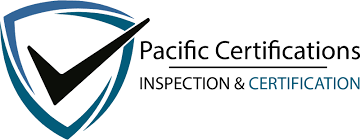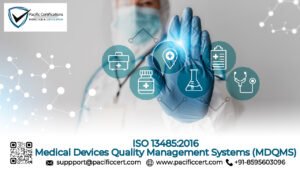What is ISO 55001:2024?

ISO 55001:2024 is the latest international standard that specifies requirements for implementing, maintaining and improving an Asset Management System (AMS). It applies to all types of assets and organizations, regardless of size or sector, and promotes systematic and integrated asset lifecycle management, ensuring that assets deliver value in alignment with organizational goals.

The latest revision modernizes the framework to account for digital transformation, and resilience, increasing the standard’s value for asset-intensive sectors like infrastructure, utilities, real estate, manufacturing, and defense.
Need to align your asset strategy with ISO 55001:2024? Contact us today at support@pacificcert.com!
Scope and Applicability of ISO 55001
ISO 55001:2024 is applicable to organizations that:
- Own or manage physical, financial, or intangible assets
- Operate in asset-intensive sectors such as transport, energy, water, construction, and defense
- Rely on digital infrastructure, data systems, and IT assets
- Want to align asset management with long-term business and sustainability objectives
Whether implemented enterprise-wide or within a single division, ISO 55001 delivers scalable governance and operational efficiency. Need help assessing applicability? Contact us at support@pacificcert.com.
Clauses of ISO 55001:2024 – Explained
Clause | Title | Explanation |
1 | Scope | Defines the purpose and boundaries of the Asset Management System (AMS). ISO 55001:2024 applies to any type of asset and organization, regardless of size or industry, and focuses on value creation through effective asset management. |
2 | Normative References | Refers to ISO 55000 (principles, terminology) and other documents required to understand and apply ISO 55001:2024 correctly. |
3 | Terms and Definitions | Lists essential terms used in the standard, ensuring clarity and consistent interpretation, especially around asset lifecycle, risk, value, and objectives. |
4 | Context of the Organization | Requires the organization to understand internal and external factors, needs of stakeholders, and define the scope of the AMS. Also addresses alignment of asset management with organizational purpose and strategic direction. |
5 | Leadership | Outlines responsibilities of top management, emphasizing leadership commitment, asset management policy, organizational roles, and clear accountability. |
6 | Planning | Focuses on identifying risks and opportunities that can affect the achievement of asset management objectives. Includes setting measurable goals, planning asset-related activities, and integrating asset strategies. |
7 | Support | Covers resources, competence, awareness, communication, and documented information needed to implement and maintain the AMS. Also includes roles for digital asset data and system tools. |
8 | Operation | Details how to implement the asset management plan, manage changes, and control outsourced processes. Focuses on lifecycle activities such as acquisition, maintenance, and disposal. |
9 | Performance Evaluation | Requires the organization to monitor, measure, analyze, and evaluate the effectiveness of the AMS. Includes internal audits and management review to ensure objectives are being met. |
10 | Improvement | Emphasizes continual improvement, corrective actions for nonconformities, and learning from performance results to optimize asset-related decisions and practices. |
What is the Certification Process of ISO 55001?
ISO 55001:2024 is a certifiable standard. The certification process validates an organization’s ability to manage assets strategically and consistently.
Steps to Certification:
- Initial assessment and gap analysis
- Scoping and system design
- Policy, documentation, and control implementation
- Staff training and internal audit
- Management review
- Third-party certification audit
At Pacific Certifications, we provide audit and certification support, to start your certification process, contact us at support@pacificcert.com.
How to Implement ISO 55001:2024 in Your Organization?
To implement ISO 55001, organizations must:
- Map all critical assets and assess their lifecycle stages
- Define the AMS scope and identify external/internal issues
- Develop asset policies, objectives, and risk frameworks
- Integrate asset planning with finance, maintenance, and procurement
- Use asset data and performance indicators to drive decisions
- Establish internal audits and conduct regular reviews
We offer tailored audit and certification frameworks across industries. Write to us support@pacificcert.com!
What Documentation is Required for ISO 55001?
Key documents include:
- Asset management policy
- Objectives and planning documents
- Asset register and performance metrics
- Risk assessments and lifecycle plans
- Roles, responsibilities, and organizational charts
- Operational and maintenance procedures
- Compliance and legal documents
- Internal audit reports and management reviews
What is the Eligibility Criteria for ISO 55001?
ISO 55001:2024 can be implemented by:
- Utilities and infrastructure providers
- Manufacturing plants and processing facilities
- Logistics and transportation companies
- Public entities and defense departments
- Private-sector firms with asset-heavy operations
- IT and digital enterprises managing high-value digital assets
Reach out for an eligibility assessment: support@pacificcert.com or dial 91-8595603096
Certification Costs of ISO 55001
The cost of ISO 55001:2024 certification depends on several important factors. These include the size of your organization, the number and complexity of physical or digital assets managed, and the scope of certification (single department vs. enterprise-wide). Costs also vary based on the number of operational sites, existing management system maturity, and whether your organization already holds other ISO certifications like ISO 9001 or ISO 14001, which may streamline audit efforts. Additional cost elements include the number of audit days required, travel and logistical expenses (for on-site audits), and ongoing surveillance audits over a three-year cycle.
If you are looking for ISO 55001:2024 certification, contact us at support@pacificcert.com!
Certification Timeline
Week | Activities |
Week 1 | Asset inventory and gap analysis |
Week 2 | System design, scoping, and documentation setup |
Week 3 | Risk assessment and performance planning |
Week 4 | Staff training, internal audits, and data integration |
Week 5 | Management review and corrective actions |
Week 6 | Third-party certification audit |
Need help building a project timeline? Contact support@pacificcert.com
What are the Requirements of ISO 55001?
Organizations must fulfil the following key requirements:

- Establish an Asset Management Policy approved by top management
- Define the scope of the AMS
- Maintain an updated Asset Register and classification structure
- Conduct risk assessments related to asset lifecycle and service delivery
- Define asset management objectives aligned with strategic goals
- Develop a performance measurement system for asset KPIs
- Ensure leadership accountability and assign clear responsibilities
- Implement operational controls for asset maintenance, procurement, and renewal
- Establish audit procedures and corrective action mechanisms
- Ensure continual improvement through reviews and data insights
Need help interpreting or applying these requirements? Reach us at support@pacificcert.com.
What are the Benefits of ISO 55001?
- Improves lifecycle value by enabling optimal use, renewal, and decommissioning.
- Provides structured tools for prioritizing asset-related risks and opportunities.
- Enables cost-effective maintenance, reduced downtime, and better resource use.
- Aligns asset decisions with environmental, social, and governance metrics.
- Demonstrates robust systems for audits, licenses, and stakeholder assurance.
- Improves trust among customers, regulators, and investors through transparency.
- Facilitates predictive analytics, IoT integration, and asset intelligence tools.
- Easily integrates with ISO ISO 9001, ISO 27001, ISO 14001, and ISO 45001.

This year, asset-intensive sectors are prioritizing digitization and lifecycle cost reduction. A report by the Global Asset Management Council indicates that nearly 65% of infrastructure providers are integrating ISO 55001 with smart asset systems and predictive maintenance platforms.
The 2024 revision introduces stronger emphasis on:
- Data-driven asset insights
- Climate resilience
- Digital transformation and cybersecurity
- Sustainable resource utilization
ISO 55001:2024 is increasingly used in public-private partnerships (PPPs), ESG disclosure frameworks, and infrastructure funding proposals. Want to stay ahead of asset management trends? Contact us at support@pacificcert.com.
How Pacific Certifications Can Help?
We at Pacific Certifications offer end-to-end ISO 55001:2024 certification support:
- Conduct independent Stage 1 and Stage 2 audits to assess compliance with ISO 55001:2024 requirements
- Review your asset management framework, lifecycle practices, and alignment with organizational objectives
- Evaluate documentation, roles, and processes as per the standard’s clauses
- Provide a detailed audit report highlighting areas of compliance, nonconformities, and improvement opportunities
- Issue an accredited ISO 55001:2024 certificate upon successful audit completion
- Perform annual surveillance audits and recertification audits every three years
- Ensure a transparent, impartial certification process with no implementation or consultancy services
Whether managing a single plant or a nationwide network, we help you implement ISO 55001 effectively and efficiently. Start your ISO 55001 project with expert support, contact support@pacificcert.com!
FAQ on ISO 55001:2024
What is ISO 55001:2024 all about?
ISO 55001:2024 is the updated international standard that specifies how an organization should set up, operate, maintain and improve its asset management system (AMS) to manage assets effectively and deliver value
Is ISO 55001:2024 certifiable?
Yes, it is a certifiable management system standard.
What is the purpose of ISO 55001?
What is the difference between ISO 55000 and ISO 55001?
What is the new ISO 55001?
What are the benefits of ISO 55001?
ISO 55001 certification provides organisations with a robust framework to manage assets effectively, leading to improved financial performance, risk management, and operational resilience. The standard supports businesses in achieving better governance, regulatory compliance, and sustainable growth.
Who can use ISO 55001:2024?
This standard applies to any organization—regardless of size or sector—that manages assets and wishes to create a structured, systematic approach to their lifecycle and performance.
How does ISO 55001:2024 differ from the 2014 version?
Key changes include: a revised section on “Context of the Organization” that now asks to consider climate change and stakeholder impacts; new requirements for an asset management decision‑making framework; and enhanced terms and definitions from ISO’s Harmonized Structure.
Why does the standard now include 'climate change' as a consideration?
ISO’s Harmonized Structure requires acknowledgment of sustainability issues. ISO 55001:2024 explicitly asks organizations to assess whether climate change affects their asset management goals
How does ISO 55001:2024 help organizations improve asset performance?
It provides a structured approach—covering leadership, planning, decisions, performance evaluation and continuous improvement—thus enhancing asset reliability, value, and alignment with organizational goals.
Ready to get ISO 55001 certified?
Contact Pacific Certifications to begin your certification journey today!
Suggested Certifications –
Read more: Pacific Blogs







